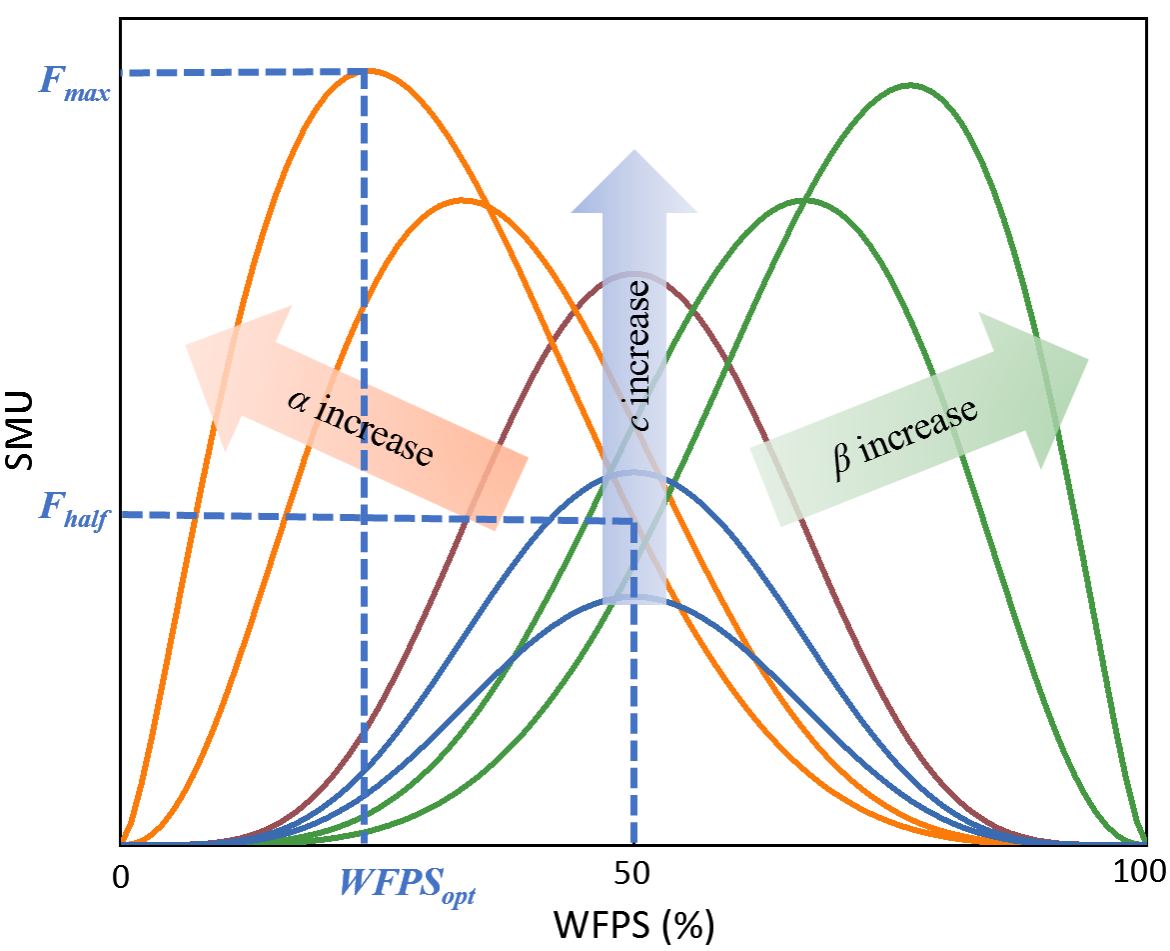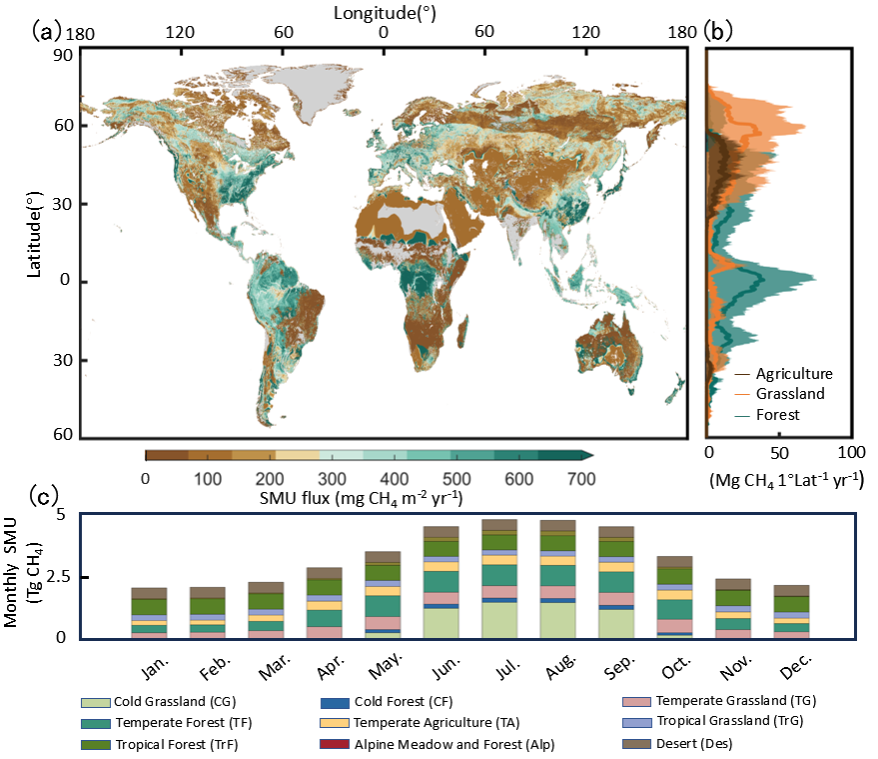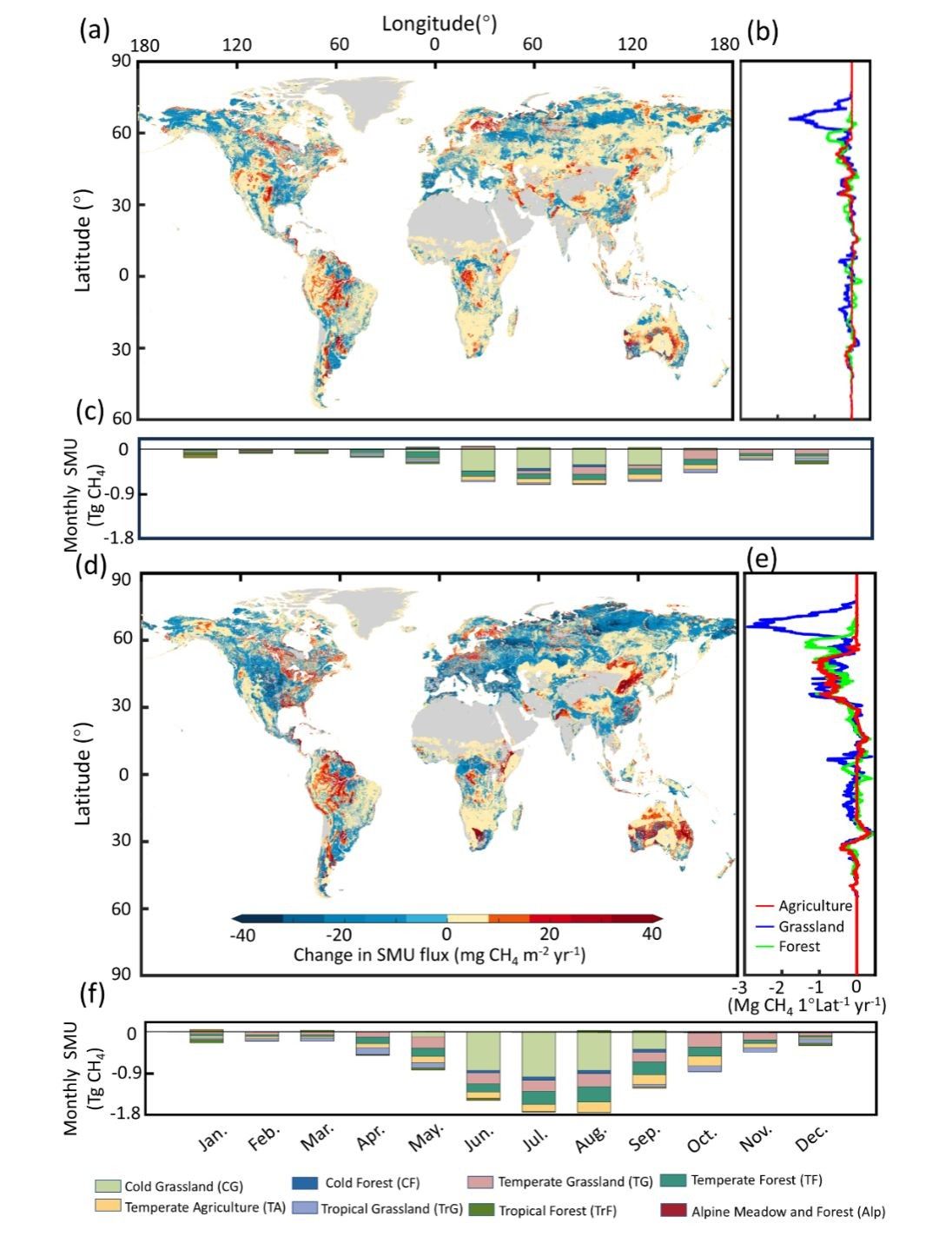Methane (CH₄) is the second most important greenhouse gas after carbon dioxide (CO₂). Since the Industrial Revolution, the rise in atmospheric CH₄ concentrations has contributed up to 0.5°C to global warming. Soil CH₄ uptake serves as the only biological sink for atmospheric CH₄, with global estimates ranging from 11 - 49 Tg CH₄ yr⁻¹, but large uncertainties remain. These uncertainties are mainly due to the significant spatiotemporal variability of soil CH₄ uptake, and the fact that existing data-driven and process-based large-scale models have not fully incorporated small-scale variations of soil CH₄ uptake, thereby limiting the accurate estimation of the global CH₄ cycle and a comprehensive understanding of how soil CH₄ uptake regulates atmospheric CH₄.
Based on this background, Jiawei Jiang, a PhD candidate (class of 2022) from Professor Zhifeng Yan’s research group at Tianjin University, developed a data-driven approach to estimate and predict global soil CH₄ uptake dynamics. By applying a Beta function model with multiple varying parameters linked to soil properties, this method connects large-scale global soil CH₄ fluxes with local-scale soil CH₄ uptake variability.

Fig.1 Shape of Beta function and the corresponding characteristic parameters
Fig.2 Global distribution of SMU datasets and the model fitting
The results show that soils, as an important biological sink for atmospheric CH₄, possess a climate regulation potential that has been previously underestimated. From 2003 to 2018, global soil CH₄ uptake was approximately 39.0 Tg CH₄ yr⁻¹, about 30% higher than existing bottom-up estimates and closely aligned with top-down assessments. This estimate effectively reconciles the long-standing discrepancy between the two approaches, highlighting that incorporating local-scale variability in soil CH₄ uptake is crucial for achieving reliable global estimates.
The study emphasizes the significant contribution of key ecosystems to CH₄ uptake — cold grasslands and deserts accounted for nearly 30% of the total global soil CH₄ uptake and should not be overlooked in future projections, although they have been severely underestimated in previous studies. Agricultural ecosystems, which are heavily and frequently disturbed by human activities, exhibited the lowest soil CH₄ uptake.
Looking ahead, the future trends of global soil CH₄ uptake will be primarily driven by changes in temperature and atmospheric CH₄ concentration, while local-scale CH₄ uptake will be mainly regulated by variations in soil moisture. Therefore, future strategies for managing soil CH₄ uptake should focus on preserving the integrity of natural terrestrial ecosystems and exploring ways to enhance CH₄ uptake in existing agricultural systems.

Fig.3 Spatial and temporal patterns of SMU in 2018

Fig.4 Moisture-driven changes in SMU from 2018 to 2100 under different climate change scenarios
The related research findings have been published in Global Change Biology under the title "Global Soil Methane Uptake Estimated by Scaling up Local Measurements." Jiawei Jiang, PhD candidate (class of 2022) at the School of Earth System Science, Tianjin University, is the first author, and Professor Zhifeng Yan is the corresponding author. This work was supported by the National Natural Science Foundation of China (grant numbers 42077009, 42221001, and 42293262).
Jiawei Jiang, Zhifeng Yan*, Jinshi Jian, Shushi Peng, Hanqin Tian, Kendalynn A. Morris, Robert M. Ellam, Jesper Riis Christiansen, Huai Chen, Jianzhi Dong, Si-Liang Li, Pingqing Fu, Dabo Guan, Guirui Yu, Cong-Qiang Liu, Philippe Ciais, Ben Bond-Lamberty. Global Soil Methane Uptake Estimated by Scaling up Local Measurements. Global Change Biology, 2025. https://doi.org/10.1111/gcb.70194